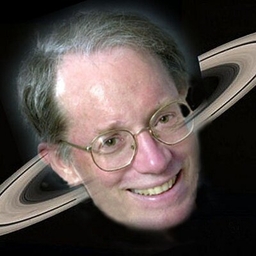
Bob King
Freelance Writer at Freelance
I love sharing astronomy. To learn more about all the amazing things overhead, check out my books including "Night Sky with the Naked Eye" and Astro Bob blog.
Articles
-
2 weeks ago |
duluthnewstribune.com | Bob King
When we picture the moon we think of its changing phases — crescent, half, full and new. But throughout the course of its orbit its apparent size also changes. This is because the moon orbits the Earth in an ellipse, not a circle. An ellipse resembles an oval with the Earth positioned off-center, so that with one side of the moon's orbit is closer to the planet than the other. Virtually every orbiting body follows an elliptical path.
-
3 weeks ago |
duluthnewstribune.com | Bob King
Algol is a close binary star in the constellation Perseus. Every 2.9 days, the larger, fainter star eclipses the smaller, brighter one. For a couple of hours, Algol dims from its usual magnitude 2.1 (as bright as a Big Dipper star) to 3.4. The change in light is very obvious to the eye. The star's Arabic name al-ghūl translates to "head of the demon," which could be a reference to the star's spooky ups-and-downs.
-
3 weeks ago |
duluthnewstribune.com | Bob King
We'll soon bid adieu to Orion and friends, the sparkly winter constellations that have enlivened the night sky since last December. They still hold sway in the west and southwest during the first half of April, but by month’s end, they brush up against dusk and set early. Venus, Mercury and Saturn have recently moved into the morning sky, leaving Jupiter and Mars as the sole bright evening planets. Jupiter maintains its brilliance, but Mars continues to fade as its distance from Earth increases.
-
1 month ago |
duluthnewstribune.com | Bob King
From late February through April, northern hemisphere skywatchers get their best views of the elusive zodiacal light, a hazy, cone-shaped glow that tilts up from the northwestern horizon at dusk. It's best visible from a very dark sky 90 minutes to 2 hours after sunset through March 30. Moonlight returns on March 31 and will wash it out. But we'll get a second opportunity during the next moonless period from April 14-27.
-
1 month ago |
duluthnewstribune.com | Bob King
Big sunspots have been few and far between on the sun in recent weeks. But there sure have been lots of smaller ones. On most sunny days I set up a small, filtered telescope to see what the sun's up to. Solar observing is incredibly fast and easy — telescope, safe filter placed securely over the front lens, tripod, and you're good to go. On March 16 it looked someone had sprinkled bits of dirt across the sun. I counted 13 different sunspot groups that day using a magnification of 27x.
Try JournoFinder For Free
Search and contact over 1M+ journalist profiles, browse 100M+ articles, and unlock powerful PR tools.
Start Your 7-Day Free Trial →X (formerly Twitter)
- Followers
- 2K
- Tweets
- 4K
- DMs Open
- No

Bright Comet Tsuchinshan-ATLAS highlights October sky https://t.co/sgJ0887Kew A calendar of the best and brightest astronomical events visible during the month of October. https://t.co/Fj7c7OO1ip

Brightest comet of year to appear at dawn and dusk https://t.co/9E0CmxyshY Comet Tsuchinshan-ATLAS will soon be making a splash in U.S. skies. (Photo: Terry Lovejoy, Sept. 18).

Harvest Moon gets eclipsed! https://t.co/aFvbLoIaiK On Sept. 17, the full moon will be in partial eclipse at a convenient viewing hour. Partial phase begins at 9:12 CDT and ends at 10:17 p.m. 65 minutes of shadowy goodness. https://t.co/04kdq9KCyj